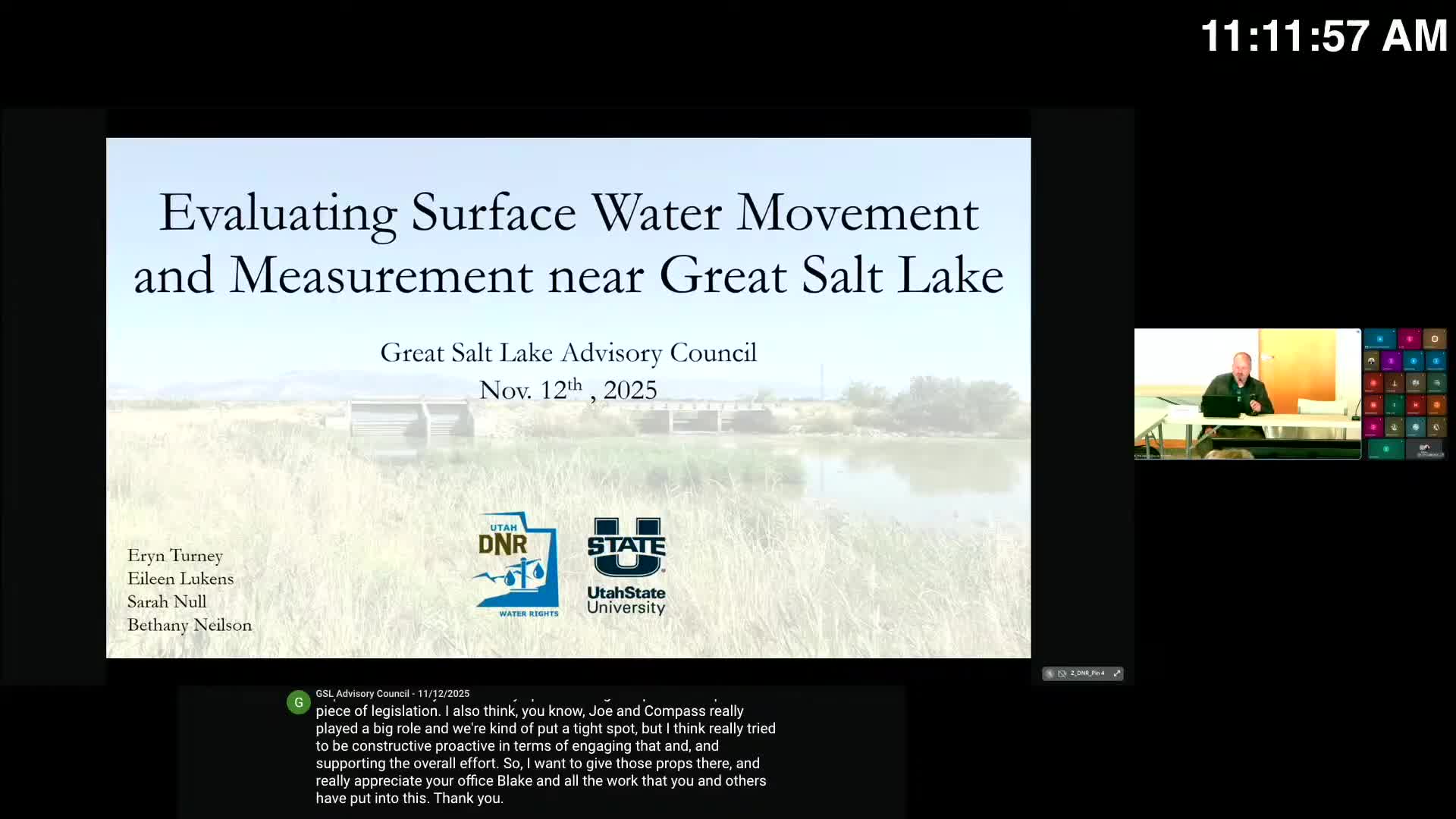USU study maps 199 inflow points, finds major gauging gaps around Great Salt Lake
November 13, 2025 | Great Salt Lake Advisory Council, Utah Division of Environmental Quality, Utah Government Divisions, Utah Legislative Branch, Utah
This article was created by AI summarizing key points discussed. AI makes mistakes, so for full details and context, please refer to the video of the full meeting. Please report any errors so we can fix them. Report an error »

Utah State University researchers presented a basin‑scale inventory and analysis of surface‑water movement and measurement across the Great Salt Lake ecosystem, documenting infrastructure gaps and candidate pathways for delivering water to the lake.
"As part of this analysis, we documented a total of 53 current measurement devices around the lake and 23 historical devices," Eileen Lukens said, summarizing the measurement inventory and a set of 46 flow‑balance diagrams the team developed with local managers. The group identified 199 potential points of inflow to what they call the GSL intermediate area, but in 2024 only 32 points had continuous flow data available.
Methods and findings: researchers compared five inflow‑estimation approaches (three full‑basin and two reduced/connection‑only methods), ran seasonal field measurements and manager‑based qualitative estimates for unmeasured sites, and found that methods that include more peripheral tributaries project higher peripheral inflows than simpler four‑gauge approaches. Methods 4 and 5 (reduced basin and direct channel gauges) produced similar estimates for water body inflow in the study area south of the Antelope Island Causeway.
Delivery pathways: the study cataloged 14 direct and 39 indirect candidate pathways for physically moving water to the lake and identified infrastructure challenges such as canal capacity, trash racks and bank stabilization needs. The team stressed that delivering water is only useful if timing and quantity align with downstream wetland management objectives.
Data access: the authors published datasets, maps and code in a HydroShare repository and provided a Shiny web application to view measurement data, manager notes and flow‑balance diagrams. The presenters encouraged stakeholders to use the repository and suggested the study can inform which locations are most feasible to receive dedicated water deliveries.
"As part of this analysis, we documented a total of 53 current measurement devices around the lake and 23 historical devices," Eileen Lukens said, summarizing the measurement inventory and a set of 46 flow‑balance diagrams the team developed with local managers. The group identified 199 potential points of inflow to what they call the GSL intermediate area, but in 2024 only 32 points had continuous flow data available.
Methods and findings: researchers compared five inflow‑estimation approaches (three full‑basin and two reduced/connection‑only methods), ran seasonal field measurements and manager‑based qualitative estimates for unmeasured sites, and found that methods that include more peripheral tributaries project higher peripheral inflows than simpler four‑gauge approaches. Methods 4 and 5 (reduced basin and direct channel gauges) produced similar estimates for water body inflow in the study area south of the Antelope Island Causeway.
Delivery pathways: the study cataloged 14 direct and 39 indirect candidate pathways for physically moving water to the lake and identified infrastructure challenges such as canal capacity, trash racks and bank stabilization needs. The team stressed that delivering water is only useful if timing and quantity align with downstream wetland management objectives.
Data access: the authors published datasets, maps and code in a HydroShare repository and provided a Shiny web application to view measurement data, manager notes and flow‑balance diagrams. The presenters encouraged stakeholders to use the repository and suggested the study can inform which locations are most feasible to receive dedicated water deliveries.
View full meeting
This article is based on a recent meeting—watch the full video and explore the complete transcript for deeper insights into the discussion.
View full meeting

